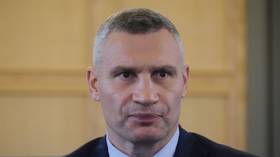EU sanctions Europe’s top diamond producer

The EU has added Russian mining giant Alrosa, as well as its CEO Pavel Marinychev, to its sanctions blacklist, the European Council announced on its official website on Wednesday.
According to the statement, the designation complements the import ban on Russian diamonds, which Brussels included in its 12th package of Ukraine-related anti-Russia sanctions adopted in mid-December.
“The Council today introduced additional restrictive measures against one person and one entity responsible for actions undermining or threatening the territorial integrity, sovereignty, and independence of Ukraine,” the council said in its statement.
It noted that the diamond industry is “strategically important” for the Russian economy, and Alrosa, in particular, has a long-standing partnership with the Russian Armed Forces, being therefore “involved in an economic sector providing a substantial source of revenue to the Government of the Russian Federation.”
Alrosa did not immediately reply to media requests for comment. The company is the world’s largest diamond producer, with a 95% share of Russian and 27.5% of global production. The company has access to roughly a third of the world’s diamond reserves and exports more than 90% of the stones it mines.
The EU’s ban on Russian diamonds partially came into force on January 1, when restrictions on importing non-industrial diamonds produced or processed in Russia became effective. An indirect prohibition on the import of Russian diamonds processed in third countries, including jewelry of Russian origin, will be gradually introduced from March 1. By September, the bloc also plans to introduce a tracking mechanism to help authorities identify the origin of imported diamonds and thus avoid sanctions violations.
EU restrictions mirror and coincide with measures introduced against Russian diamonds by the G7 countries.
Russia views the diamond ban as evidence that Western states have largely exhausted areas where they can still sanction the country. Moscow has already mainly redirected its diamond trade to the markets of China, India, the UAE, Armenia, and Belarus, which all saw a sharp increase in rough and cut stone imports from the country last year. Kremlin spokesman Dmitry Peskov said last month that Russia has been long prepared for restrictions on its diamond industry and has tools to circumvent them.
For more stories on economy & finance visit RT's business section





















